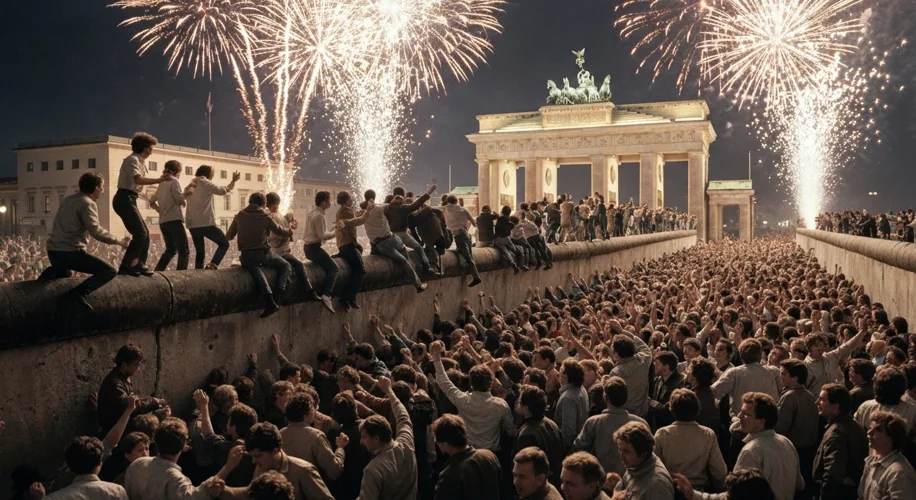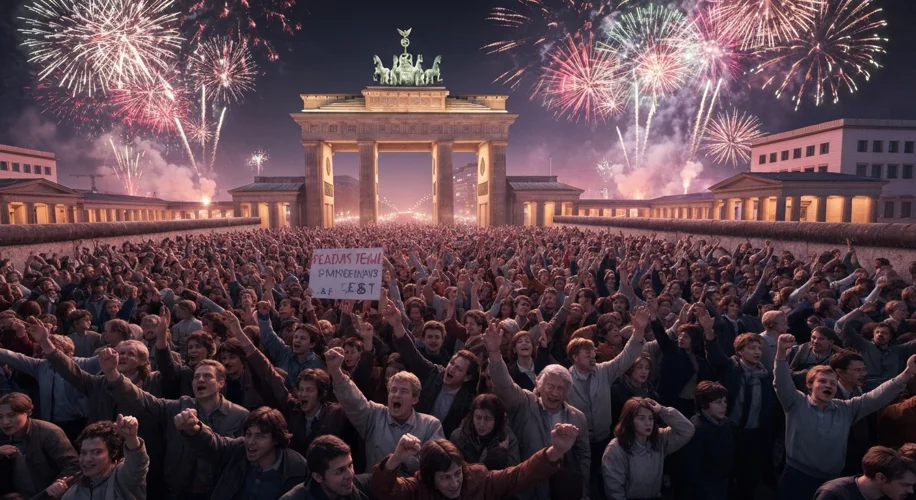The biting November wind of 1989 whipped through Berlin, carrying with it not just the chill of approaching winter, but the electric hum of history about to be made. For twenty-eight long years, the Berlin Wall had stood as a brutal, concrete scar across the heart of a city and a continent, a stark physical manifestation of the Iron Curtain that divided the world into two hostile camps. Its fall, a seemingly spontaneous eruption of popular will, would echo through the decades, symbolizing the end of the Cold War and the reunification of a fractured Germany.

The Wall’s genesis was a desperate act by an East German regime facing a hemorrhaging population. Between 1949 and 1961, an estimated 2.7 million East Germans, seeking political freedom and economic opportunity, had fled to the West. The GDR (German Democratic Republic) government, under Soviet influence, saw this exodus as an existential threat. On the night of August 13, 1961, under the guise of a “protective barrier,” construction began. Families were separated overnight, neighborhoods divided, and the once-fluid border became a heavily fortified death strip, complete with guard towers, minefields, and armed patrols with shoot-to-kill orders.
The human cost was immense. While official figures vary, it is estimated that at least 140 people died trying to cross the Wall. Each attempt was a desperate gamble, a testament to the unyielding human desire for freedom. There were daring escapes involving hot air balloons, submarines, and even modified Trabant cars. There were also quiet tragedies: children separated from parents for decades, lovers meeting in secret along the heavily guarded frontier, the constant, gnawing ache of division.
By 1989, however, the foundations of Soviet power were crumbling. Mikhail Gorbachev’s policies of Glasnost (openness) and Perestroika (restructuring) had inadvertently unleashed forces that the Soviet Union could no longer control. Across Eastern Europe, popular movements were challenging communist regimes. Hungary had already opened its border with Austria, creating a loophole for East Germans seeking to reach the West. The pressure on the GDR government was immense.
The tipping point arrived on November 9, 1989. In an attempt to ease travel restrictions and quell growing unrest, the East German government announced new, albeit still restrictive, travel regulations. Günter Schabowski, the party boss of East Berlin, was tasked with announcing these changes at a press conference. When asked by Italian journalist Riccardo Ehrman when the new rules would take effect, Schabowski, who seemed poorly briefed, stammered, “As far as I know, it takes effect immediately, without delay.”
This seemingly innocuous bureaucratic misstep ignited a firestorm. News of the announcement spread like wildfire through East Berlin. Thousands of East Berliners, interpreting Schabowski’s words as an immediate opening of the border, converged on the checkpoints. 
The border guards, lacking clear orders and overwhelmed by the sheer numbers, found themselves in an impossible situation. At the Bornholmer Straße crossing, Harald Jäger, the commander on duty, faced an increasingly agitated crowd. After hours of tense standoffs and frantic calls to superiors who offered no guidance, Jäger made a fateful decision. At approximately 10:45 PM, he ordered his men to open the gates.
The scenes that followed were pure, unadulterated jubilation. East and West Berliners streamed through the opening, embracing strangers, crying, laughing, and dancing on the Wall itself. People climbed onto the concrete barrier, chipping away at it with hammers and chisels, eager to possess a piece of this momentous event. The Brandenburg Gate, long a symbol of division, became a beacon of unity.
The fall of the Berlin Wall was not just the collapse of a physical barrier; it was the symbolic dismantling of the Cold War. Within a year, Germany would be reunified, and the geopolitical landscape of Europe would be irrevocably altered. The images of jubilant citizens atop the Wall, the sound of cheers echoing through the night, became indelible symbols of freedom triumphing over oppression.
The legacy of that night is profound. It ushered in an era of democratic transition across Eastern Europe and signaled the eventual dissolution of the Soviet Union. While the path to true German unity and the healing of decades of division has been complex, the fall of the Berlin Wall remains a powerful reminder of the human spirit’s unyielding pursuit of liberty and the transformative power of collective action. It was a night when a wall, meant to divide forever, became the very stage upon which a divided world began to heal.

